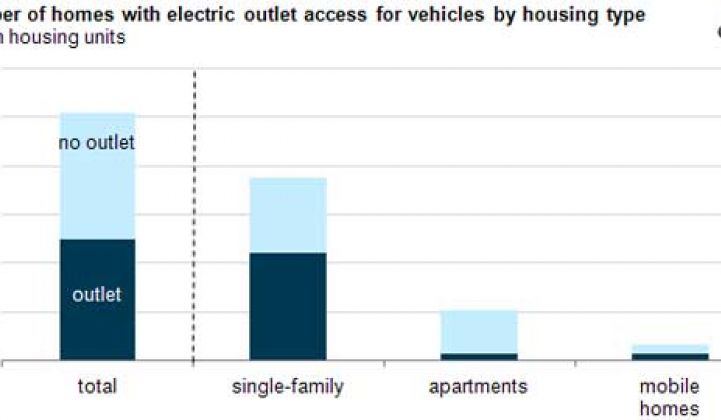It isn't hard to argue California is in danger of losing its race against the electric car.
The state will be among the first to see large numbers of battery-powered plug-ins on its roads. But its electrical infrastructure is far from ready, and regulators worry a surge of evening recharging will push peak power use beyond capacity.
What's more, officials say paying for necessary upgrades to electrical lines and equipment could push up utility bills at a time when some voters are pushing back against greenhouse gas reduction goals. A ballot initiative written to roll back California's 33 percent renewable electricity target appears to have qualified for the November ballot.
It is no surprise California is on the vanguard of the electric car movement. Drivers here are expected to snatch up electrics in a surge of green enthusiasm. It also is no surprise California finds itself steering through unfamiliar territory. The state often blazes paths for the rest of the nation to follow.
What's interesting is how much territory there is to cover. The state's public utilities commission -- the CPUC -- is just now preparing its first key regulatory ruling.
The agency's decision later this month will address the thorny issue of whether electric-car charging services are utilities and therefore subject to commission rules. The alternative is to let the market dictate prices and business conditions.
The importance of the judgment can't be understated, but it is just the tip of the iceberg. With electric vehicles from Nissan, GM and other makers scheduled to go on sale late this year, the state is still at an early stage of the largest change to public transportation in more than a generation.
Officials and industry executives admit to grave worry. Even utility executives, who vow they will be able to supply the power for recharging, acknowledge their forecasts of electricity demand are changing rapidly. With uncertainty running high, time is running short.
The scale of the challenge is enormous. Thirty-three percent of the state's greenhouse gas emissions come from transportation and without addressing vehicles California will never meet its goal of returning to 1990 CO2 levels in a decade. To do so means putting 2.5 million plug-in hybrids and electric vehicles in service -- one for every 15 people in the state.
With so many unknowns, "we don't have the answers," says CPUC Commissioner Dian Grueneich. "This will be a massive task."
During a keynote at the Berkeley-Stanford Cleantech Conference this week, Grueneich said she fears that electric cars will drive up the demand for power during the late afternoons, when air conditioners hum, office lights blaze and car owners arrive home to plug in. It is a time of day when there can be little excess power to spare.
"We are gravely concerned...[that electric cars] will drive up our need for peak power," she said. The commission hopes to use the lure of cheap, off-peak power to delay some of this demand. But it also is rushing to prepare the electrical infrastructure before local power circuits are overwhelmed.
This means building out neighborhood networks that typically handle five to seven homes. Utilities will target communities where electric cars are anticipated in the largest numbers. While there is some guesswork required, these neighborhoods are most likely the ones that first took to hybrid cars.
Regulators hope their gerrymandering is on target. If all or a majority of the homeowners in a local community add electric cars -- each with the capacity to draw as much power as an additional home -- the circuits could buckle. It is a race against time, says Grueneich. Applications from utilities for local upgrades generally take 30 to 50 days to process.
Grueneich estimates the changes to the state's electrical infrastructure could run to millions, if not billions, of dollars. "To move to a clean economy is going to cost some money," she admits, suggesting that rate increases are possible.
PG&E's Saul Zambrano, director of integrated demand side management core products, promises the utility is "on top" of the numerous changes. But he also admits its estimate of electric car adoption is a moving target. When Nissan announced in March it would sell the electric Leaf for $32,780, PG&E was surprised at the affordable sticker price -- so surprised that it increased its sales forecast. (The utility declined to release the exact figure.)
"We know the electric cars are coming," says Zambrano. "We used to think 2011. Now we think late 2010."
PG&E agrees that the new cars are likely to be clustered in certain neighborhoods, underscoring the need to make infrastructure upgrades rapidly.
Another set of concerns comes from carmakers. One of these worries is the need for a standard plug, so drivers don't get stranded at charging stations without the correct technology, says Marc Tarpenning, a co-founder and former employee of Tesla Motors.
Service stations also need to be allowed to sell electricity. This requirement underscores the need for the CPUC to change its regulations authorizing only utilities to sell electric power, Tarpenning says.
He added that until recently, he projected the need for a string of charging stations along the highways that connect California's cities. He has since revised his thinking.
"You could imagine a world where for a period of time we don't worry about long-distance charging," he says. Drivers will take gasoline-powered cars on lengthy trips and use electrics about town.
But then, he points out, you could imagine too few.




